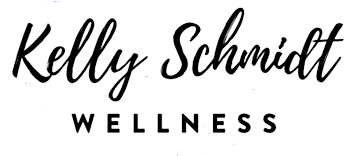“As bizarre as it might sound, what you eat or smoke today could affect the health and behavior of your great-grandchildren.” – Ethan Walters, Discover magazine
Changing the way you eat, including the exclusion of gluten, is a stride in the right direction. Directing you to a link that houses over 200 reasons to avoid wheat can be a motivator.
Know this, there has been a sharp increase in interest and research on the topic of “gluten intolerance.” In 1971, there were 71 studies listed on MEDLINE which referenced gluten. Last year in 2011, there were 514. Gluten is linked to everything from infertility, to diabetes, to schizophrenia and more. According to Dr. David Clark DC, a functional neurologist and endocrinologist, “There’s not a disease or health condition you can think of that do not have an association – in the research literature – with gluten sensitivity.”
Gluten is in wheat, barley, rye and oats (unless marked gluten-free oats), yet, it is in so many foods from the obvious bread, cakes, pastas to sneakier areas such as soy sauce, marinades, mustard, vinegar, Worcestershire sauce, preservatives (maltodextrin), BBQ sauces (Stubbs is safe), dressings (Primal Kitchen and Tessamae’s are clean), pre-packaged spices, instant rice and more. Clearly, the transition is not easy, but the below steps can be a start.
Removing Gluten Successfully:
- Focus on REAL foods – swap our processed foods, for real foods. Used to bread at dinner, have a potato or rice. Used to toast and peanut butter, move to a rice cake or fruit. (Side note: we both LOVE PBJ’s – try this, warm up a cup of raspberries with a large spoonful of peanut butter. So good). The best way to know something is gluten-free is when you choose a food in it’s natural, fresh, the whole form. No label necessary.
- Read Labels – Even when you would assume something would not have wheat, barley or rye in it, read the labels. Some words that are gluten-containing but not obvious include: maltodextrin (yet this can come from corn too), malt, soy sauce, modified food starch, to name a few.
- Know Your Grains – Gluten containing grains can include wheat flour, white flour, graham flour, Semolina, Durham, Bulgur, Kamut, Kasha, Matzo meal, Couscous, Spelt, and Triticale. Thankfully most package now bold if wheat is in the product. below the food label. Other gluten grains/foods: orso, crackers, pretzels, ice cream, yogurt (esp if they have flavorings added in), dips, blue cheese, Gorgonzola, veggie burgers, imitation seafood and more.
- Make the Decision – when making the transition to be and eat gluten free, don’t go halfway. It will makes this much harder, and social pressure (when eating out or hanging out with friends) may not be supportive when they see you do a variety of things. Make the decision today, and tomorrow and the following.
- Make Over Your Kitchen – clean our your kitchen of gluten-containing foods. As an a la carte service, I have helped clients go through their kitchen to confirm what is good and what is not. I also help orchestrate the setup of the kitchen to better influence food decisions.
- Social Media – follow a gluten-free website or Instagram account that you enjoy, and can serve as inspiration for meal ideas.
- Find a Friend – with the same gluten-free goal. Any journey is better with support.
Related articles:



Leave A Comment
You must be logged in to post a comment.